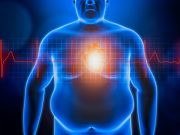Tag: Fat, Body
Increased Intermuscular Fat Linked to Coronary Microvascular Dysfunction
Independent link seen between decreased coronary flow reserve and decreased skeletal muscle, increased intermuscular adipose tissue
RSNA: Obesity, VAT Linked to Measures of Amyloid Burden in Midlife
Visceral adipose tissue had significant direct effect on amyloid burden, which was not explained by HOMA-IR
Long-Term Sex Hormone Treatment in Transgender Care Tied to Changes in Body Composition
Longitudinal changes seen in regional fat and muscle composition and cardiometabolic biomarkers
Excess Adiposity Plays Role in Postmenopausal HR-Positive Breast Cancer
Estimated burden of 19.9 percent reported for body mass index and 41.9 percent for Clínica Universidad de Navarra-Body Adiposity Estimator
Body Roundness Index Trajectory Tied to Risk for Cardiovascular Disease
In a longitudinal cohort, middle-aged and older Chinese people with moderate-stable and high-stable BRI had increased risk for CVD
Liraglutide Efficacious, Safe for Children Aged 6 to <12 Years
Liraglutide results in greater reduction in BMI than placebo plus lifestyle intervention for children with obesity
Risk for T2D Increased for Individuals With Late Chronotype
Those with late versus intermediate chronotype also have higher BMI, larger waist circumference, more visceral fat and liver fat
Specific PFAS Differentially Affect Maternal Midlife Adiposity
No association seen for overall PFAS mixture, but higher midlife weight seen per doubling of PFOS, 2-(N-ethyl-perfluorooctane sulfonamido) acetate
Automated Multiorgan CT Can Predict Diabetes, Other Conditions
CT analysis, including visceral fat, can predict various conditions
Early School-Based Health Promotion Intervention Beneficial
Beneficial trends in z scores for waist-to-height ratio, waist circumference maintained at six years for those starting intervention in grade 1














